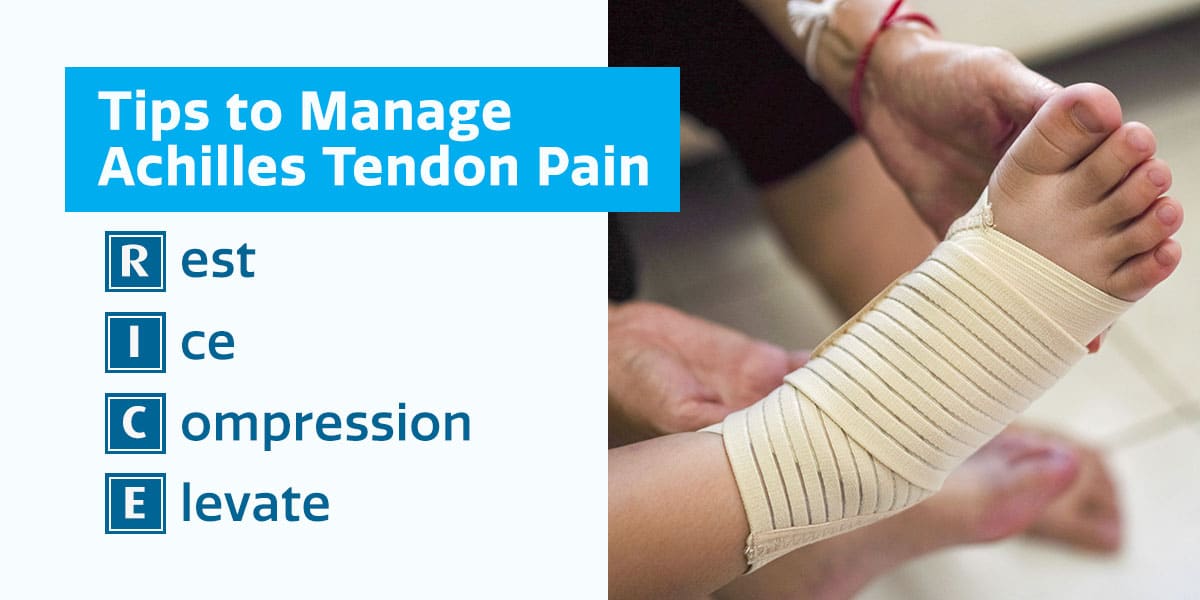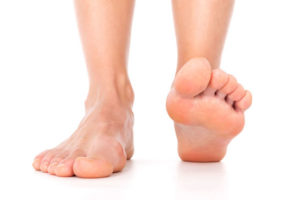
According to Greek mythology, Trojan War hero Achilles only had one weak point — the tendon at the back of his ankle. That’s because his mother held him by the heel when dipping him in the River Styx to protect his body. Today, we still refer to a vulnerability as an Achilles’ heel because of this story.
Though the Achilles or calcaneal tendon is the strongest in the human body, it is still susceptible to injury. This thick cord stretches through the back of the ankle to connect your heel bone to the calf muscle. It works like a lever — when a muscle contracts, the tendon pulls at the attached heel bone, allowing movement.
Achilles tendon injuries can substantially impact your quality of life, making foot movement a painful struggle. This article explores what causes pain in the Achilles tendon and when to consult a podiatrist.
Types of Achilles Tendon Injuries
There are two primary types of Achilles tendon injuries — acute rupture or break injuries and Achilles tendinopathy, previously known as tendinitis.
Acute Rupture
A complete or partial tear can occur when the tendon stretches beyond its normal range. Recreational sports like soccer, basketball and hockey require foot movements that can lead to this injury. However, unsupportive shoes, a sudden increase in physical activity, not stretching leg muscles before exercising and tight or weak calf muscles can also increase the risk of an acute rupture.
Achilles Tendinopathy
Tendinopathy is a chronic health condition that causes the weakening of the Achilles tendon. Walkers, runners and other athletes are at risk of this kind of sports injury due to continuous strain on the tendon. This condition results from several small tears, known as tendinosis. It is most common in younger people, though arthritis can also cause tendonitis.
Symptoms of Achilles Tendon Injuries
The symptoms of a tendon injury can vary depending on the severity. However, the most common signs to look for are:
- Pain, swelling and a warm feeling along the length of the tendon when walking
- Difficulty standing and inability to balance on one toe
- Pain when touching the tendon
- Discomfort or severe stiffness of the calf muscle
- Pain above the heel
It can be challenging to determine what pain in your Achilles means, especially when your injury is mild and some foot movement is manageable. For most patients, the injury feels like being kicked in the calf muscle. Discomfort beneath your heel might be unrelated to your Achilles tendon.
Tips to Manage Achilles Tendon Pain

Consult an Achilles pain specialist if you believe you may have injured this body part. Meanwhile, the RICE self-care strategy for injuries can alleviate swelling and ease pain symptoms. This acronym helps you remember the following four steps.
- Rest: Pain is often your body’s only means of signaling something is wrong. Stop an activity immediately if you feel uncomfortable. Pushing yourself to endure pain will only worsen the injury. Ideally, you should avoid applying pressure to the area for at least 24 to 48 hours. Rest to help your body recover.
- Ice: For most athletes and active people, applying ice to an injury is almost automatic. An ice pack will reduce swelling around the injury, easing the pain. Apply an ice pack wrapped in a towel for between 15 and 20 minutes every couple of hours for the next two days.
- Compress: Compressing an injury means wrapping it to prevent swelling. Use a stretch-fabric bandage when compressing an injury, as regular bandages might interfere with circulation and cause more pain. Even when using an elastic bandage, avoid wrapping too tightly. Loosen the wrap if the skin below the bandage turns blue or feels cold, tingly or numb.
- Elevate: Elevating an injury means lifting the injured area above heart level. This trick will reduce pain, swelling and a throbbing sensation.
The RICE self-care strategy is suitable for most muscle and tendon injuries and is critical in early recovery.
When to See a Podiatrist
While resting, applying an ice pack, compressing the area and elevating your foot can provide some relief, the four steps of RICE should not be your only treatment.
Visit a podiatrist if your injury symptoms persist for more than two days. If your symptoms fade on their own after a day or two, the injury is mild or possibly unrelated to your Achilles tendon.
In contrast, if the pain persists, you likely have an acute rupture or tendinosis and require medical attention. Leaving an Achilles tendon injury untreated for a prolonged period could worsen the injury and cause more damage to muscles and surrounding tissues. Neglecting medical attention could also result in the tendon healing incorrectly.
Schedule the first available appointment with a podiatrist if you experience moderate to severe pain and cannot stand or walk.
Achilles Tendon Injury Treatments
An expert podiatrist will examine your foot and ankle to check movements and identify pain by how you react to pressure. They can also feel along the tendon for a gap that indicates a tear. Sometimes, your doctor may need to use imaging tests like an MRI or an ultrasound to accurately determine whether you have a tendon injury and its severity.
A brace or walking case is a nonsurgical treatment plan for Achilles injuries. In more severe instances, your podiatrist may recommend Achilles tendon surgery that stitches the two ends of the tear back together. After this procedure, you must wear a cast that immobilizes the foot while it heals. Specialists often recommend physical therapy to strengthen the tendon and surrounding muscles. Completing a physical therapy program can benefit you even if you do not need surgery.
Consult a Podiatrist at Foot & Ankle Surgical Associates
Postponing treatment for an Achilles tendon injury can lead to complications in the healing process. Proper diagnosis will also identify the most suitable treatment plan.
If you suffered an injury, seek support from a qualified podiatrist at Foot & Ankle Surgical Associates. One of our experienced team members will assess, diagnose and treat your injuries to restore strength and mobility. Visit our site to book an appointment or reach out at 360-754-3338.




